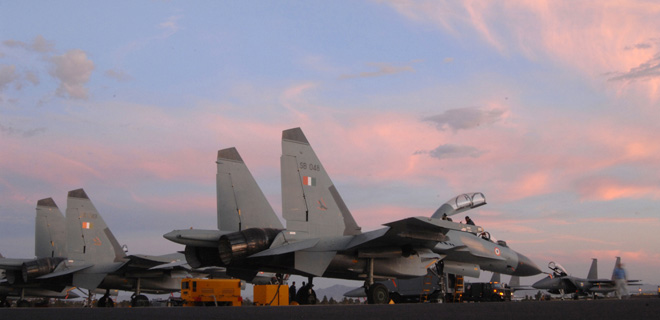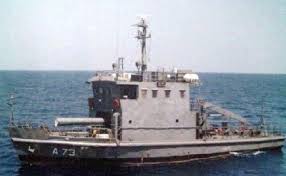By Ritu Mousumi Tripathy
India and Russia need not have to speak it aloud to the world time and again. They were the comrades-in-arms yesterday, and they still remain so even today despite the ever-shifting geopolitical and geostrategic sphere.
A day after a senior Indian naval official said that India was in advanced stage of talks with Russia to build three Grigorovich-class of guided missile frigates (advanced variant of the six Talwar-class frigates Indian Navy currently operates) under the Make-In-India programme, reports have emerged that the Russian side has decided to partner with industrialist Anil Ambani-led Pipavav Shipyard to build the new-generation warships.
The decision to acquire more of these Project 1135.6 class FFGs (Russian equivalent of Krivak-III frigates) reaffirms India's confidence in this strategic naval platform to strengthen its maritime capabilities.
Indian Navy has already acquired INS Talwar, INS Trishul and INS Tabar between 2003 and 2004, followed by INS Teg, INS Tarkash and INS Trikand between 2012 and 2013 - all under the crucial Project 1135.6 deal with Russia.
While the first three warships of the class have been equipped with the Russian Klub-N cruise missiles, the later three frigates have deployed the deadly BRAHMOS supersonic cruise missiles, built jointly by India and Russia, as the "prime strike weapon."
The Indian Government has also cleared a proposal to equip the first three frigates of the series with BRAHMOS, replacing the Klub missiles.
Interestingly, the Russian Navy is also going to acquire six new Grigorovich-class of stealth frigates and deploy them in its Black Sea fleet. The Kaliningrad-based Yantar Shipyard is building all six warships under the project which are at various stages of development with a delivery timeline of 2017-18.
By deciding to partner with Russia in building the new stealth frigates under the Make-In-India programme, India, spending heftily on new defence acquisitions, has made its goals quite clear - to leverage on the vital technological aspects of building such an advanced naval platform at home, while generating the necessary skill sets and infrastructure required to build more such military assets for the Nation in future.
And Russia, for its part, is going to get all the financial benefits from the order, expected to be worth around US $3.5 billion.
The order is likely to be a Government-to-Government deal, the broad contours of which are still to emerge.
The India-Russia military partnership spans for over six decades now, with the latter supplying many critical defence technology and systems to New Delhi in the past. Such vital cooperation has not merely remained confined to the 'buyer-seller' tag, but expanded further to include Defence Partnership, resulting in joint research, design, development and production of critical military hardware.
Even as both the trusted allies are exploring new strategic alliances in the swiftly emerging world order, nevertheless, the decades-old bonhomie, trust and friendship between the two sides remains crucial even today.
And the latest frigate deal is the concrete proof that India and Russia remain the true "comrades-in-arms", more than willing to upkeep their deep-rooted strategic partnership intact.
Russia-India: True Comrades-in-Arms
Article Posted on : - Jul 16, 2015
Other Related News
PM-led CCS clears Rs 64,000 cr deal to procure 26 Rafale-M jets for Navy
The Cabinet Committee on Security (CCS) chaired by Prime Minister Narendra Modi on Wednesday cleared a proposal to procure 26 naval variants of Rafale fighter jets from France at a cost of around Rs 64,000 crore for deployment on board aircraft carrier INS Vikrant, sources in the defence establishment said.
 Previous Article
Previous Article Next Article
Next Article













The Indian Air Force, in its flight trials evaluation report submitted before the Defence Ministry l..
view articleAn insight into the Medium Multi-Role Combat Aircraft competition...
view articleSky enthusiasts can now spot the International Space Station (ISS) commanded by Indian-American astr..
view article